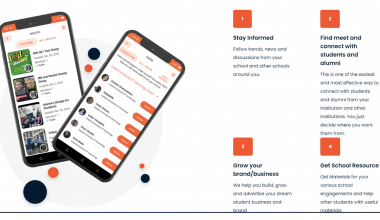Your budget as a student is focused on education and living expenditures. You don’t want to upset that delicate equilibrium by changing your mode of transportation. If you’re trying to figure out which car is right for you, consider if you really need a car for college. If you do, the next step for you as a college student is to look for the best, most affordable automobile and insurance.
We’ve compiled a list of the best cars for college students to assist you in comparing different brands and models with a focus on budget, efficiency, and safety, with so much on your to-do list before you head off to college or university.
Table of contents
- Do You Need a Car in College?
- Can I Afford a Car in College?
- What To Consider When Buying A Car For College Students
- How Much Will Car Insurance Cost a College Student?
- What Role Does Safety Play In A Car For College?
- What Other Factors Impact a College Car?
- Best Cars for College Students
- Conclusion
- Frequently Asked Questions
- References
- We Also Recommend
Do You Need a Car in College?
The first hurdle to overcome when buying a car for a college student is deciding between need and want. Is a car required for this particular collegiate experience? If it doesn’t, a car will just be another gasoline, insurance, and parking cost source. It will also serve as a source of diversion.
Some colleges prohibit first-year students from having automobiles. Many institutions use permit parking to limit parking on campus. Having a car while in college might be a huge pain. If you don’t need a personal car to get to work or to and from an off-campus apartment, it may be more of a want than a need. If so, skip it for the first couple of years.
Can I Afford a Car in College?
The cost of a car determines a feasible payment. Whether the parents or the student bears the monthly costs, they must be kept as low as possible. Most carmakers, such as Ford Credit and Honda Financial Services, have captive financing companies offering to finance new and certified pre-owned (CPO) automobiles. This is an excellent place to begin.
If you get a loan outside of captive financing, you’ll nearly always get a lower monthly payment on a used vehicle than a new one, all things being equal. Credit unions are well-known for providing low-interest vehicle loans.
What To Consider When Buying A Car For College Students
There are numerous factors to consider when buying a car, let alone one for a college student. It’s easy to become overwhelmed by the procedure. Don’t allow the difficulties of purchasing an automobile to deter you from acquiring one! After reviewing some of the items to consider, you could find that having a car isn’t so out of reach after all!
1. Decide on a budget for the car
Begin by determining a budget. Your objective will appear much more feasible if you decide on a realistic budget. Consider how much money you have in savings, how much you make or can afford to pay each month, and how you can save money to put toward a car.
2. Do Your Homework
It’s time to examine your options now that you know how much you can spend. You’ll have a much greater chance of finding a car that you can afford and matches your demands if you spend some time studying before you buy.
3. Decide on the type of car to buy, whether New or Used Car
Buying a new or used car is one of the most important decisions you’ll have to make. A new car should be a choice based on your budget and study. If that’s the case, it’s time to weigh the benefits of new vs. used.
4. Take a Few Test Drives
While research can help you learn about what’s available and cut down your options, it can’t tell you how the automobile will feel when you get behind the wheel. An automobile that appears good on paper may not perform as planned. It’s especially crucial for rookie drivers to test drive multiple models so they can see how performance varies from vehicle to vehicle.
5. Master the Art of Negotiation
Don’t be forced to pay the sticker price! The price is negotiable, unlike most items you’ll buy. Prices for used cars are usually more variable because they are not tied to the manufacturer’s production expenses. Even if you take the lead in the bargaining, it’s critical to have a parent or other adult there when discussing the price.
How Much Will Car Insurance Cost a College Student?
Insurance cost is a significant part of the total cost of ownership. It’s common knowledge that some vehicles are less expensive to insure than others. Automobile insurance is quite competitive, and looking around might help you save money.
On the other hand, Premiums are impacted by various personal characteristics such as driving history, annual miles, residence, and so on. Insurance has historically been a larger part of the overall cost of ownership for drivers less than 25 years old. Involve your insurance agent in the decision-making process.
See also: 10 Lowest Car Insurance Plans for You in 2023
What Role Does Safety Play In A Car For College?
Regardless of age or purpose, safety features and ratings should always be a primary consideration when purchasing a car. Check out the Insurance Institute for Highway Safety (IIHS) and the National Highway Traffic Safety Administration’s (NHTSA) crash test results as you narrow down your options.
What Other Factors Impact a College Car?
Four doors, imaginative storage solutions with places to hide laptops, and easy parking manners, among other features, are critical, especially if the car will be used for college to first-job transit.
On various levels, technology features are crucial. For example, voice recognition allows you to modify the radio station or temperature level without taking your eyes off the road. However, most college students are most concerned about remaining connected.
They want to be able to charge and integrate their devices into a vehicle’s infotainment system, at the very least. Again, the newer the model, the greater the number of connecting possibilities.
Lastly., gasoline is one of those monthly expenses that fluctuate from year to year. It all has to do with the price of oil fluctuates. You should look for vehicles with higher fuel efficiency, especially on a tight budget.
Best Cars for College Students
Here’s a list of the best cars for college students:
1. 2021 Toyota Corolla
Starting Price: $20,780 | Rating: 4.4
(Image from unsplash)
The Toyota Corolla is one of the numerous automobiles on this list that has been named a Top Safety Pick by the Insurance Institute for Highway Safety (IIHS). It also has a low cost-to-own and a track record of reliability. The entry-level L model is reflected in Corolla’s beginning pricing. For $400 more, you can upgrade to the LE trim level. It comes with many more standard features, such as automatic climate control, remote keyless entry, and a center armrest in the back seat.
Toyota Safety Sense 2.0 is standard on every Corolla. This package includes forward-collision warning, automated emergency braking, adaptive cruise control, lane-departure warning, lane-keeping assist, lane centering, traffic-sign recognition, and high-beam assist.
2. Hyundai Elantra
Starting Price: $20,645 | Rating: 4.8
Image from (unsplash)
Hyundai fully redesigned the Elantra in 2021. For the entry-level SE’s small price, you get Hyundai’s SmartSense suite of safety driver-assist goodies and a projected 37 mpg combined mileage. Forward collision warning, automated emergency braking, lane-keeping assist, lane centering, driver-attention warning, blind-spot monitoring, and rear cross-traffic alert are among the features available.
High-beam assist, an 8-inch touchscreen, wireless Android Auto and Apple CarPlay, Bluetooth connectivity with voice recognition, and two USB ports are also included as standard features.
3. Honda Civic
Starting Price: $22,005 | Rating: 4.7
The Honda Sensing suite of driver aids, which includes front collision warning, auto emergency braking, lane departure warning, lane-keeping assist, and adaptive cruise control, is standard on every Civic.
One USB port and Bluetooth connectivity are included in the connecting technologies. Honda isn’t known for offering option packages. You must progress up the trim-level ladder to acquire more material. For extra cargo room, opt for the hatchback type.
4. Mazda3
Starting Price: $21,445 | Rating: 4.0
The Mazda3 received a Top Safety Pick+ rating from the IIHS. According to the government, it also gets 31 mpg in combined city-highway driving. The Mazda3 has outstanding handling and may be equipped with an all-wheel-drive (AWD). We selected this one of our Best Cars for Snow because of its available AWD.
The Mazda3 feels more costly on the inside than it is. Although blind-spot monitoring is only available on the Select model, the Mazda3 comes standard with forward-collision warning, emergency braking, lane-departure warning, lane-keeping assist, adaptive cruise control, driver attention alert, and high-beam assist on the base model. Bluetooth connectivity with speech recognition is standard, as is an 8.8-inch touchscreen and two USB ports.
5. Subaru Crosstrek
Starting Price: $23,295 | Rating: 4.3
All-wheel drive (AWD) is standard on Subaru’s go-anywhere Crosstrek. While the Crosstrek comes standard with a 6-speed manual transmission, upgrading to the continuously variable transmission (CVT) for an additional $1,350 adds some important safety measures. The CVT-equipped Crosstrek also has a feature that allows you to select between fuel economy and power. The fuel economy is also improved when the CVT is used. The combined mileage is 30 mpg, vs 25 mpg with the manual transmission.
When choosing the CVT, the base Crosstrek comes with Subaru’s EyeSight Driver Assist Technology, an IIHS Top Safety Pick. The CVT also adds forward-collision warning with automatic emergency braking, lane-keeping assist, and adaptive cruise control to the Crosstrek. A blind-spot monitor with rear cross-traffic alert is optional or standard on higher model levels.
The connectivity package includes one USB port, a 6.5-inch touchscreen, Apple CarPlay, Android Auto, Bluetooth connectivity, and hands-free phone integration.
6. Kia Seltos
Starting Price: $23,110 | Rating: 4.8
The Kia Seltos is a completely new subcompact SUV from Kia. Every version of the Seltos save the LX comes with a comprehensive suite of safety systems, including forward-collision warning with emergency braking, driver attention warning, lane-departure warning, lane-keeping assist, lane centering, and high-beam assist, according to the IIHS. To get blind-spot monitoring, you’ll need to upgrade to the EX grade, which will cost $3,400 more.
The connectivity options include Bluetooth with speech recognition, Apple CarPlay, Android Auto, and one USB port. Seltos offers class-leading cargo space and a second-row seat large enough to accommodate adults.
7. Hyundai Kona
Starting Price: $21,540 | Rating: 4.2
The Hyundai Kona is a subcompact SUV with much bang for your buck. Its tiny size makes parking on campus simple, and the rear cargo compartment is ideal for carrying gear. Apple CarPlay and Android Auto are also included as standard features. (https://tomadamswc.com) With the gas engine, you can get up to 33 mpg. (An electric vehicle is also available.)
8. Honda HR-V
Starting Price: $22,140 | Rating: 4.5
Thanks to its spacious interior, the Honda HR-V gets a decent 30 miles per gallon in combined city-highway driving. It also achieved top marks in crash tests conducted by the government and the IIHS.
The pricing shown is for the base LX trim. Still, the Honda Sensing Suite of driving aids, which includes forward-collision warning, auto emergency braking, lane-departure warning, lane-keeping assist, adaptive cruise control, and a blind-spot camera, is only available on the EX trim.
9. Nissan Sentra
Starting Price: $20,335 | Rating: 4.1
The Nissan Sentra is a practical car with an elegant appearance and a sporty edge. This little car features “zero gravity” seats that are supposed to make the commute to school or work more comfortable. The Sentra gets up to 39 miles per gallon on the highway (33 miles per gallon combined), so excursions to the petrol station won’t be too expensive. All models come standard with Apple CarPlay and Android Auto.
Even the base model includes the entire suite of SafetyShield 360 driver aids, including auto emergency braking with pedestrian detection, rear cross-traffic alert, rear automatic braking, blind-spot warning, lane-departure warning, and high-beam assist, in addition to 10 airbags.
10. Kia Soul
Starting Price: $18,610 | Rating: 4.5
Even as an option, this IIHS Top Safety Pick delivers no driver assistance in its entry-level model. Forward-collision warning, emergency braking, and blind-spot monitoring with rear cross-traffic alert are included in the S grade, which adds $3,100 to the total. Bluetooth connectivity (no voice recognition), Apple CarPlay, Android Auto, and one USB port are all included in the base model.
The standard Soul, which comes with a 6-speed manual transmission, gets 27 mpg in combined driving.
Conclusion
These are the ten best cars for college students, ranging from tiny SUVs to midsize sedans. All of these cars have excellent ratings and place well in our rankings.
Frequently Asked Questions
Regardless of age or purpose, safety features and ratings should always be a primary consideration when purchasing a car.
The cost of a vehicle determines a feasible payment. Whether the parents or the student bears the monthly costs, they must be kept as low as possible.
If you don’t need a personal car to get to work or to and from an off-campus apartment, it may be more of a want than a need. If so, skip it for the first couple of years.
References
- 10 Best Cars for College Students
- Best Cars for College Students
- How to find the best cars for college students





